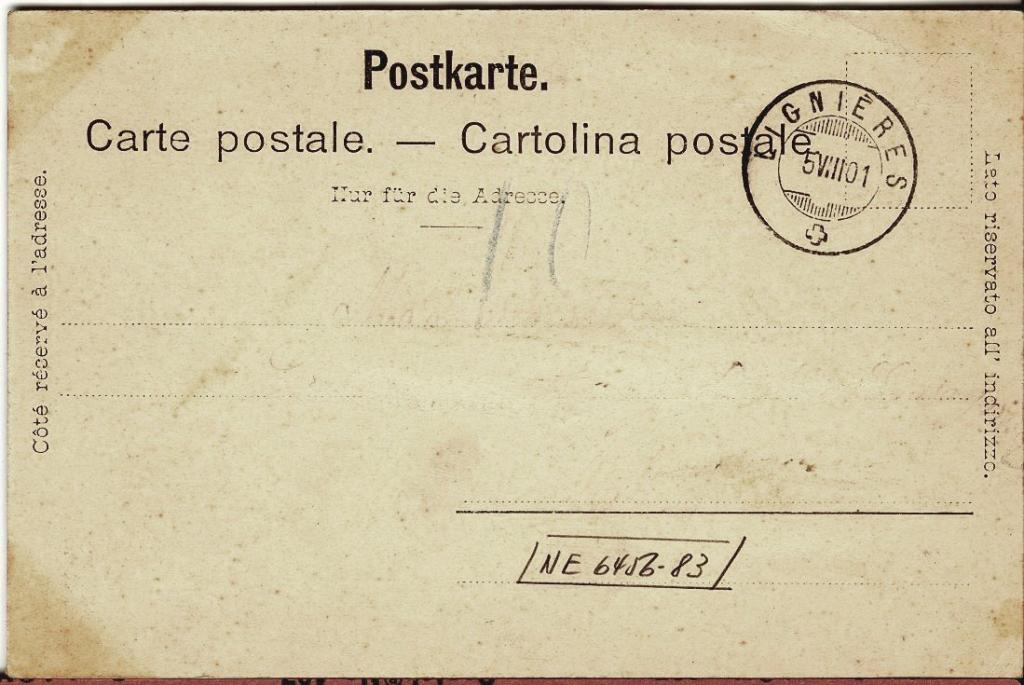

|
Lignières: Then and Now |
|
Click image for contemporary view.


The historical photograph is courtesy of M. Werner Löffel of Lignières, who kindly contributed images of his post card collection to the archives of the Fondation de l'Hôtel de Commune de Lignières.
|
by John Walker May, 2007 |
|
Now we've walked a bit further down the Rue des Hautes-Bornes, and turned back to look toward the Hôtel de Commune. We've also stepped back in time—while our first look at that building dated from around 1911, this post card was mailed in 1901.
To the left, a new building has come into view, at present address Rue des Hautes-Bornes 8 (RACN 010-6456-00055). At the start of the twentieth century it was yet another of the pensions for people spending their summer holidays in Lignières. Subsequently the post office was located here, and it is the current site of the Restaurant de la Poste, whose name recalls that epoch in the building's history. The original building dates from before 1848; around 1875 one or more additional storeys were added. Note the hitching post where the kids are standing at left side of the “then” image.
To the right, the building in front is the present Rue des Hautes-Bornes 1, RACN 010-6456-00233, of which we saw just a little at the previous stop on the tour. Note that the leftmost attached part of this building no longer exists; I suspect it was demolished to widen the road sometime in the automobile era. The sharply pointed spire which appears to emerge from the roof of this building in fact belongs to that behind it, then the school, now the Maison de Commune, which is visible in the “now” photo; the tower is no more.
In the foreground is a fountain (RACN 010-6456-00216) which bears the date 1864. It may be a perspective trick, but I think the fountain may have been moved a little down the street, closer to the viewpoint, in the intervening years. Whatever the reason, you can only see part of the pillar behind the fountain in the “now” photo, which conceals the the detail that the ball atop the pillar is now missing. It also seems like the water pressure was higher a century ago. We'll get a better look at this fountain on the next stop.